Caerphilly Castle | Visit Amazing Welsh Castles
Caerphilly Castle is one of the largest medieval fortresses in Britain. It stands in the town of Caerphilly, South Wales. The castle is known for its concentric design and large artificial lakes.
These features helped defend it during conflicts in the 13th and 14th centuries. Today, it is managed by Cadw, the Welsh Government’s historic environment service.
Quick Facts
Built: Between 1268 and 1271
Founder: Gilbert de Clare, a Norman lord
Type: Concentric stone castle with water defences
Location: Caerphilly, South Wales
Size: Second-largest castle in Britain after Windsor
Managed by: Cadw
Notable Feature: South-east tower leans more than the Tower of Pisa
Entry: Paid access via Cadw
Brief History
Gilbert de Clare, a powerful Norman marcher lord, began building in 1268. His goal was to secure control over Glamorgan during a dispute with Llywelyn ap Gruffudd, Prince of Wales. Construction was rapid and well-resourced. The original design already included concentric walls and water defences, rare features for the period.
Llywelyn attacked during its early construction, leading to brief occupation and damage. Gilbert quickly retook the site and finished the castle by 1271. Its extensive lakes and moats made it nearly impossible to besiege by traditional means.
By the late 13th century, the military threat in the area had lessened. Caerphilly gradually became an administrative centre and symbol of Norman authority. In the 14th century, the castle passed to the Despenser family, allies of Edward II.
During the 15th-century Owain Glyndŵr uprising, the castle was briefly garrisoned but saw little action. Over time, it fell into disuse and partial ruin. In the 18th century, the Marquesses of Bute began conservation. The 3rd and 4th Marquesses undertook major restoration in the late 19th and early 20th centuries.
Features and Layout
The castle is a textbook example of a concentric castle. This means it has multiple layers of defensive walls. The inner ward is surrounded by a high curtain wall with towers. An outer wall encircles this core, adding an extra layer of defence.
The castle’s most distinctive feature is its extensive water defences. Artificial lakes and moats surround the structure, making it hard for attackers to reach the walls. These lakes were formed by damming nearby streams and are among the earliest examples of large-scale water engineering in a British castle.
Four gatehouses control access, with the main entrance on the east side. Inside the inner ward, visitors can see the great hall, residential buildings, and a chapel. Several towers still stand to full or partial height. The south-east tower leans at a dramatic angle due to subsidence, giving it a visual resemblance to the Tower of Pisa.
A small stone bridge leads to a central island, giving access to the inner areas. The layout allowed defenders to control every approach with crossfire from multiple angles.
Did You Know?
The leaning south-east tower tilts over 10 degrees, more than the Leaning Tower of Pisa. It began leaning due to damage from Parliamentarian forces during the English Civil War.
Images
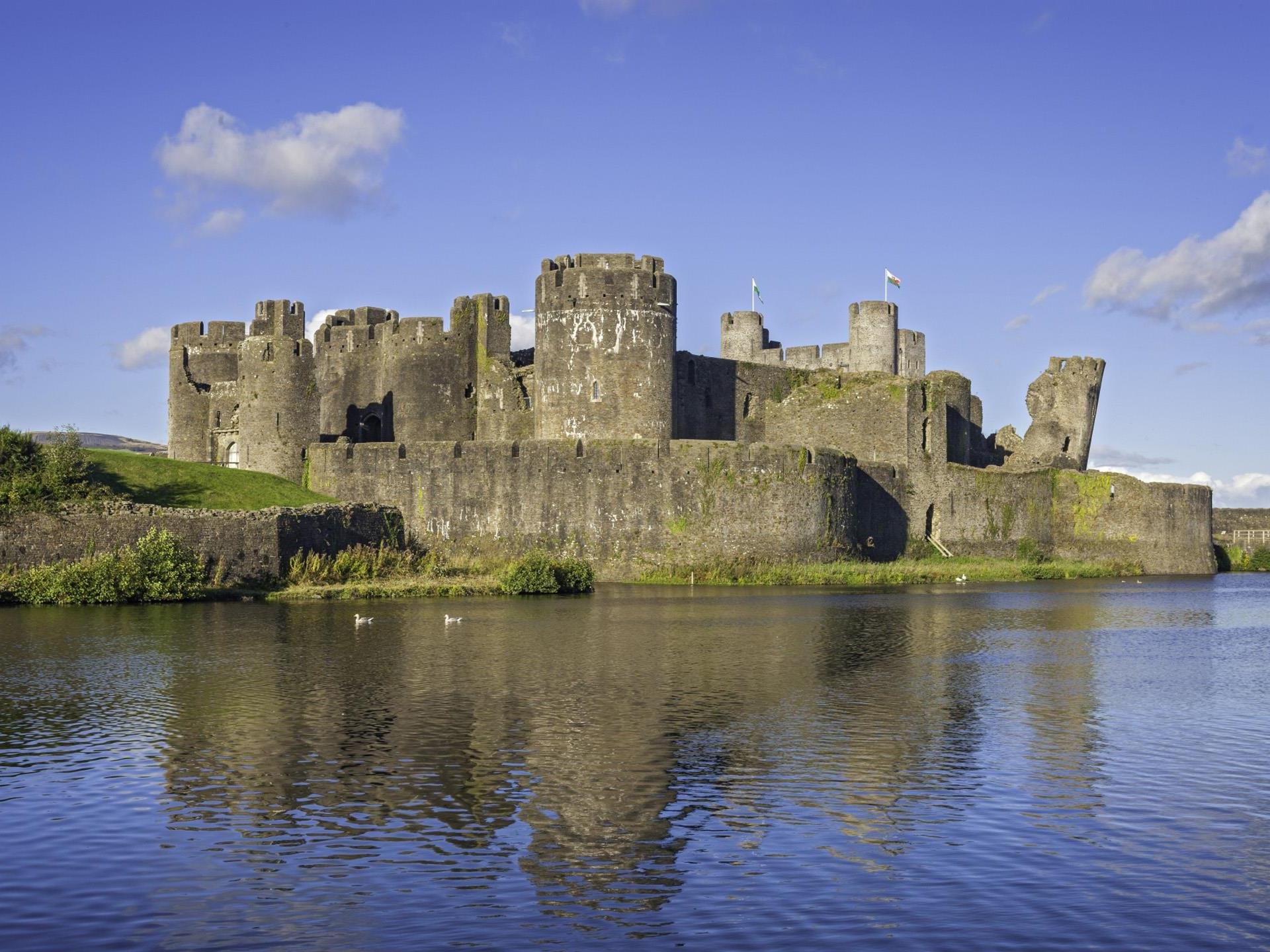
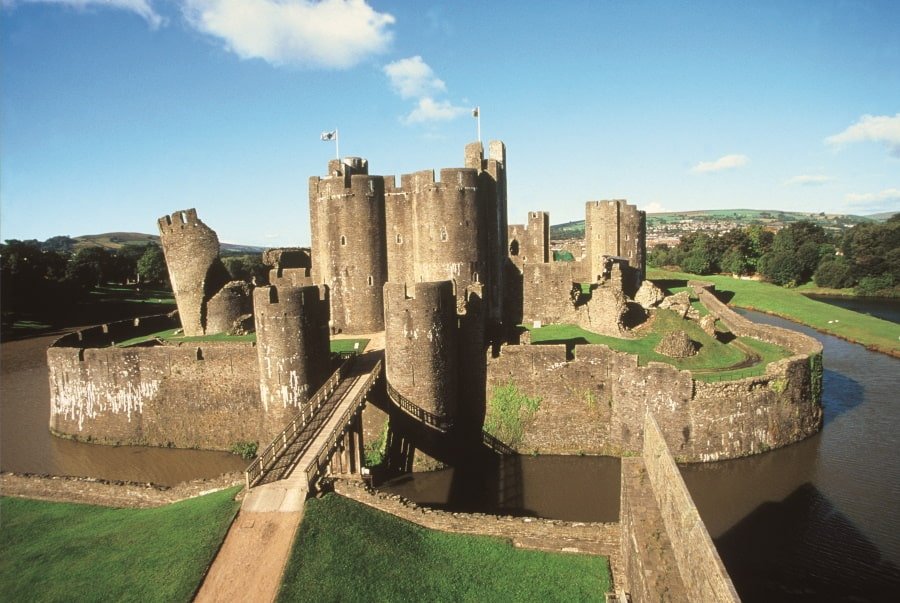
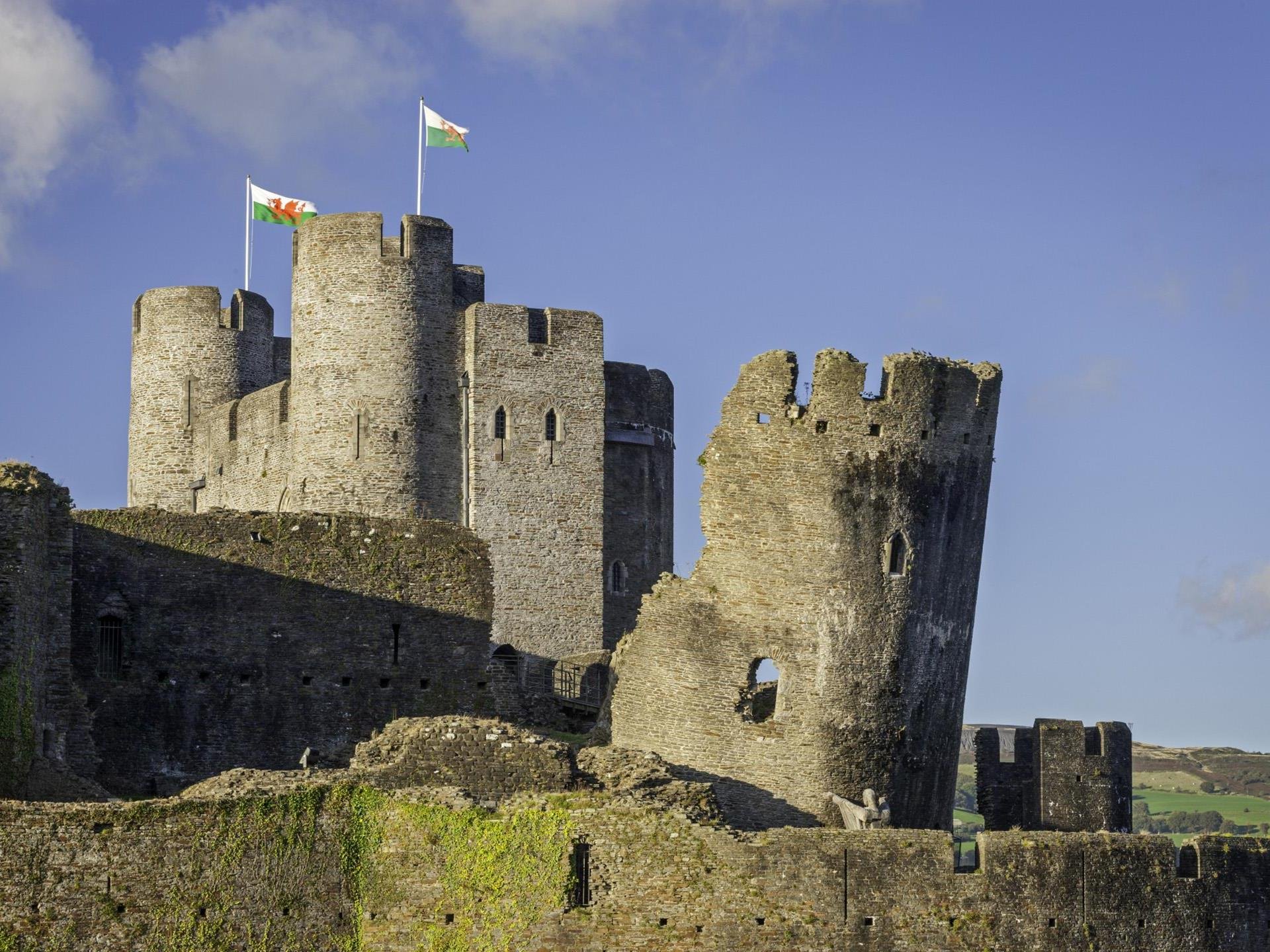
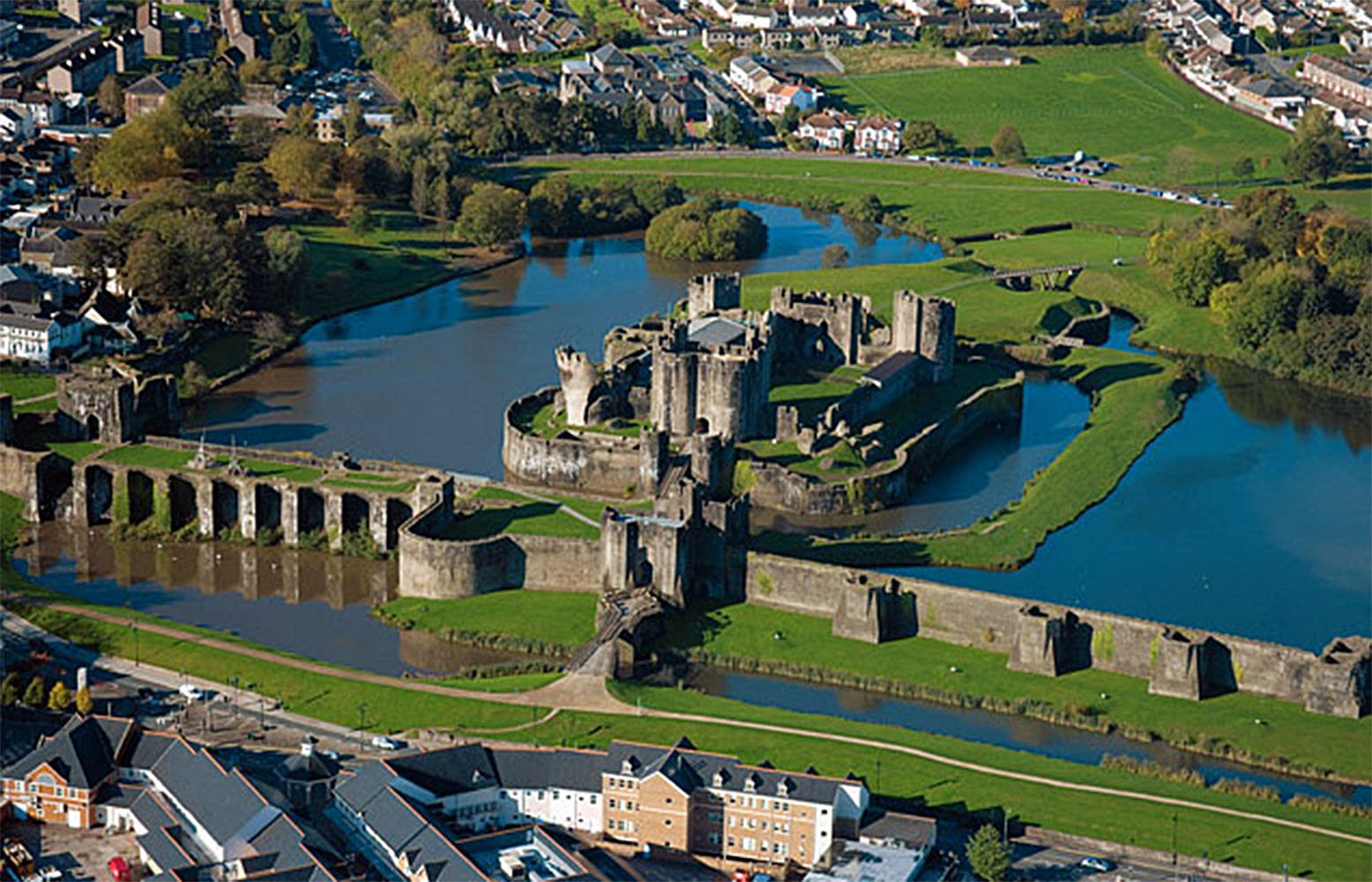
Legends and Stories
It has several local stories tied to its dramatic setting and long history.
One well-known legend is that of the Green Lady of Caerphilly. According to local tales, this ghost is said to be the spirit of a noblewoman who fell in love with a Welsh prince. Her love was forbidden by her Norman family, and she died heartbroken. Sightings describe a woman in green wandering near the Great Hall. Reports of this figure have come from visitors and local residents alike. This story is often mentioned in ghost tours and was highlighted on platforms such as TripAdvisor and local history blogs.
Another tale involves Owain Glyndŵr, the Welsh rebel leader. Although the castle did not fall to his forces, some local accounts suggest he held secret meetings in the area. There is no historical evidence for this, but it adds to the lore surrounding the site. Some of these stories appear in community heritage projects and local guides, reflecting the castle’s continued role in regional identity.
Visiting
Cadw currently manages the site.
As of 13/07/25, restoration work is underway, and some areas may be closed. Upper floors and wall walks remain accessible, requiring use of historic spiral stairs Cadw.
Opening Times
1 March–30 June: 09:30–17:00
1 July–31 August: 09:30–18:00
1 September–31 October: 09:30–17:00
1 November–29 February: 10:00–16:00
Closed 24–26 December & 1 January
Ticket Prices
Adults: £12.40
Seniors (65+): £11.10
Juniors (5–17) / Students: £8.60
Family (2 adults + up to 3 children): £40
Disabled visitor + companion: Free
Cadw members: Free
Blue Light Card, Veterans: 10% discount
From 21 June 2025, all admissions have a 25% discount due to regeneration works.
Last admission is 30 minutes before closing.
Booking
Advance booking is required for weekends. Weekday visits allow on‑site ticket purchase.
Directions & Facilities
Address: Castle Street, Caerphilly CF83 1JD
Coordinates: 51.5761 N, 3.2203 W
Parking: Pay & display car parks short (~110 m) and long (~500 m) stay
Facilities: Gift shop; portable hearing induction loop
Toilet: Closed on-site; nearest public facilities at Ffos Caerffili market
Accessibility: Dogs on leads permitted in ground-floor areas; accessible parking available; spiral stair access limits upper-floor access
Nearby Attractions
Here are some well-regarded sites and attractions within easy reach of the castle:
Llancaiach Fawr Manor
A living history experience at a 16th‑century manor house. Costumed guides recreate life in the 1600s .
Caerphilly Mountain
A nearby hill offering panoramic views over Cardiff and the Bristol Channel. Includes woodland walks and a snack bar.
Cwmcarn Forest
Ideal for families, forest trails, mountain biking, fishing, and a visitor centre with café.
Tommy Cooper Statue & Twyn Community Centre
Commemorating the famed Welsh comedian. The Gothic Revival centre also hosts community events and the flower festival.
Virginia Park (Caerphilly RFC ground)
Historic sports venue with football and rugby fixtures, located just a short walk from the town centre.
Local Festivals
The Big Cheese Festival (late July) is held within the castle grounds or town, celebrating Caerphilly cheese with stalls, medieval re-enactments and entertainment.
Visitor Tips
Arrive early on weekends to avoid queues, especially during festival periods
Book online in advance to guarantee entry during peak times and secure discounted rates
Wear sturdy shoes, many areas include uneven surfaces and spiral staircases
Dogs are welcome on leads in ground-level areas; assistance dogs permitted throughout
Food: No café on site, use nearby town options or bring a picnic for the outer grounds
Parking: Short-stay lot fills quickly; long-stay (~6 min walk) usually has spaces
Photography is allowed; drones require permission
Accessibility: Upper floors inaccessible to wheelchair users; ground level includes ramps
FAQs
-
Most visitors spend 1.5 to 2.5 hours at the site. This includes walking the grounds, exploring the towers, and viewing displays. Allow extra time during events or school holidays.
-
Yes, several towers are open to visitors. These include access to spiral staircases and upper levels. Some sections may close during restoration work. Always check notices on arrival.
-
Yes. The site is family-friendly and includes open grounds, educational displays, and interactive exhibits. Children under 5 enter free. Parents should supervise children near water and staircases.
-
Dogs on leads are welcome in the outer grounds and ground-floor areas. Assistance dogs have full access. Owners must clean up after their pets.
-
Advance booking is advised, especially at weekends or holidays. Walk-up entry is allowed on weekdays if capacity permits. Cadw members also need to book in advance to guarantee entry.
Wrapping it Up
This castle remains one of the most significant medieval sites in Britain. Its large scale, water defences, and concentric layout marked a major development in 13th-century castle design. Originally built to assert Norman control in Glamorgan, it later served as a political centre and residence.
Today, the castle offers a mix of preserved and reconstructed structures. Visitors can explore the towers, great hall, and walk the outer walls. Its leaning tower, ghost stories, and setting within artificial lakes make it a distinctive site among Welsh castles.
Sources
Cadw Official Site – Provided verified ticket prices, opening times, restoration info, accessibility, and official history
https://cadw.gov.wales/visit/places-to-visit/caerphilly-castleVisit Wales – Confirmed local attractions and directions
https://www.visitwales.com/destinations/south-wales/south-wales-valleys/things-do-caerphillyWhichMuseum – Cross-checked entry fees and discount offers
https://whichmuseum.com/museum/caerphilly-castle-4681Wikipedia – Used to verify historic dates, castle dimensions, and linked attractions
https://en.wikipedia.org/wiki/Caerphilly_CastleLatitude.to – Confirmed verified GPS coordinates
https://latitude.to/articles-by-country/gb/united-kingdom/6247/caerphilly-castleTransport for Wales (tfw.wales) – Listed nearby heritage attractions
https://tfw.wales/places/things-to-do-in/caerphillyVisit Caerphilly – Provided details on Cwmcarn Forest and events
https://www.visitcaerphilly.com/en
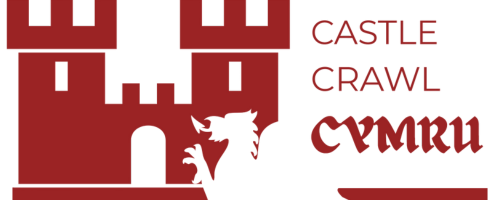

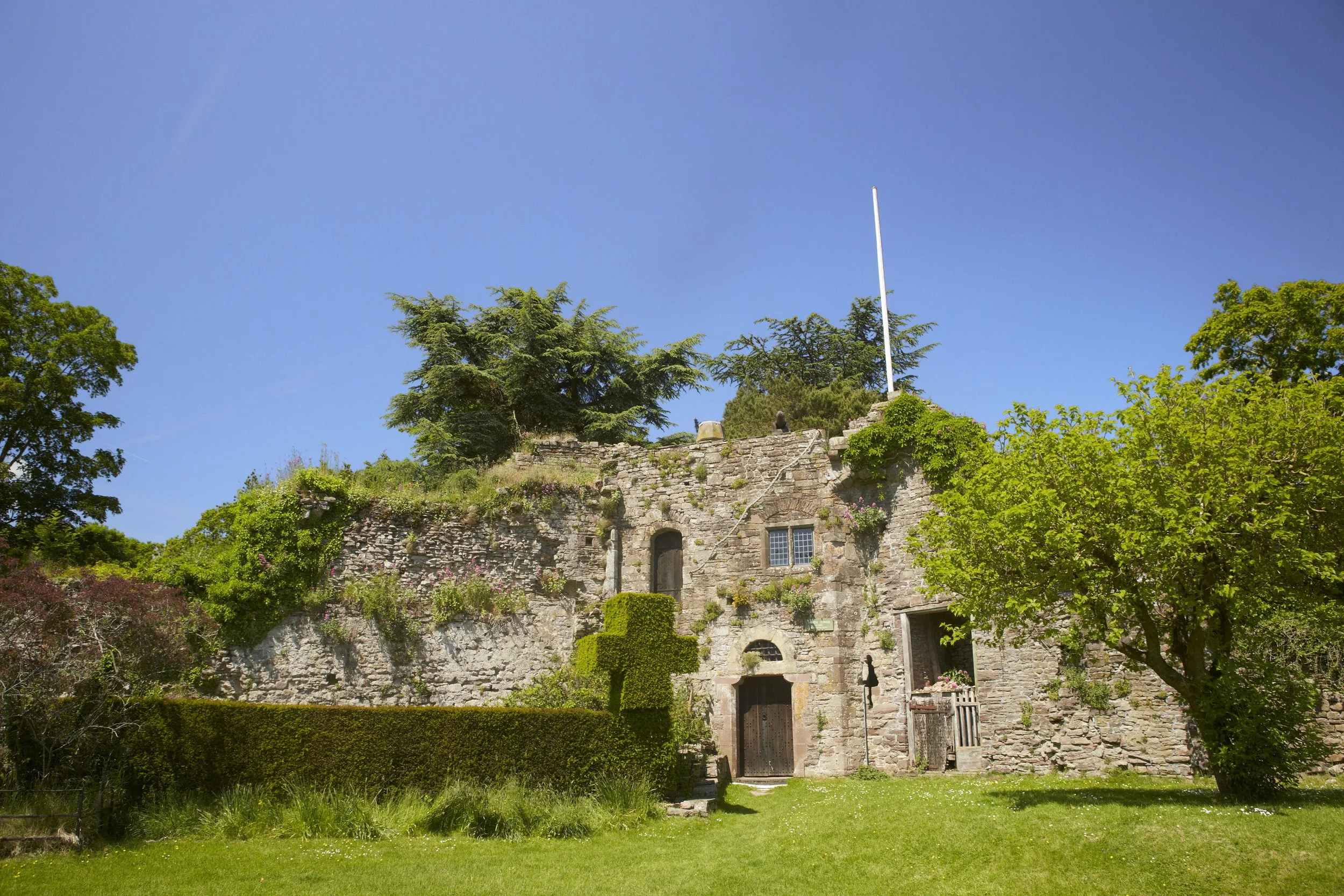
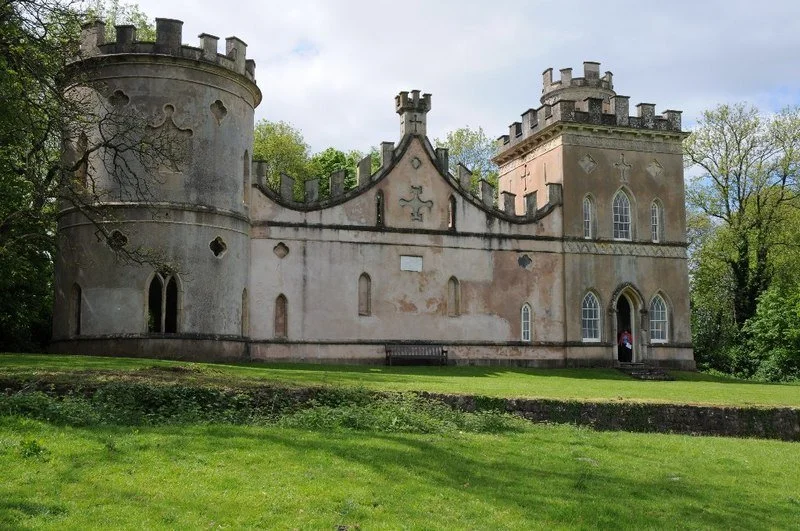
Cardiff Castle is a medieval and Victorian-era site in the centre of Cardiff, the capital of Wales.